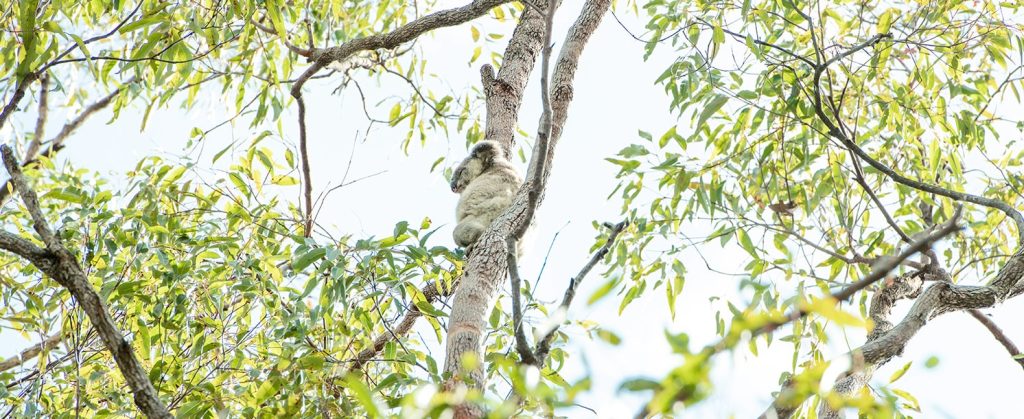Recently, our work monitoring koala populations has faced significant criticism, much of it fuelled by misinformation and misunderstanding. The backlash has been intense, with accusations of invasiveness and claims that we should simply leave the koalas alone. While we understand the passion behind these concerns, halting our monitoring efforts during vegetation clearing and construction works would not help koalas—it would only make their situation worse. What is the solution if monitoring is stopped? Most critics don’t offer an answer other than to suggest “just stop habitat clearing.” The reality is that these development projects have already been approved. In other words, the horse has bolted, and the clearing is inevitable. So, if we stop monitoring, what is left to protect the koalas that remain?
We Are Not Responsible for Clearing Habitat
Interestingly, while EVE is not responsible for habitat clearing or its approval, our organisation has found itself on the receiving end of criticism. Our commitment is to finding real solutions for koalas, a species facing increasing threats. As experts in koala ecology, management, and veterinary care, we are the ones actively working to safeguard and care for these animals. The criticism directed at us seems misplaced, as we are the ones with the specialised knowledge to effectively address the challenges koalas face in the wake of ongoing habitat destruction. If we don’t try to protect them, who will?
Sometimes, Intervention is Essential
Over the years, we have monitored numerous koala populations across southeast Queensland and have found that in some populations, more than 50% of koalas are sick from chlamydial disease. This is a notably high statistic for any disease. This illness can cause severe inflammation of the bladder (cystitis), conjunctivitis leading to blindness, severe reproductive issues, pain, and, if left untreated, often results in death. Unfortunately, some of the sickest populations we have encountered are those living in areas of intact bushland, away from urban development, highlighting that even in secure habitat, they are not immune to the impacts of this disease. This serves as a reminder that habitat preservation alone is not enough to ensure their survival—intervention is essential to address these health challenges and give koalas a better chance of recovery.
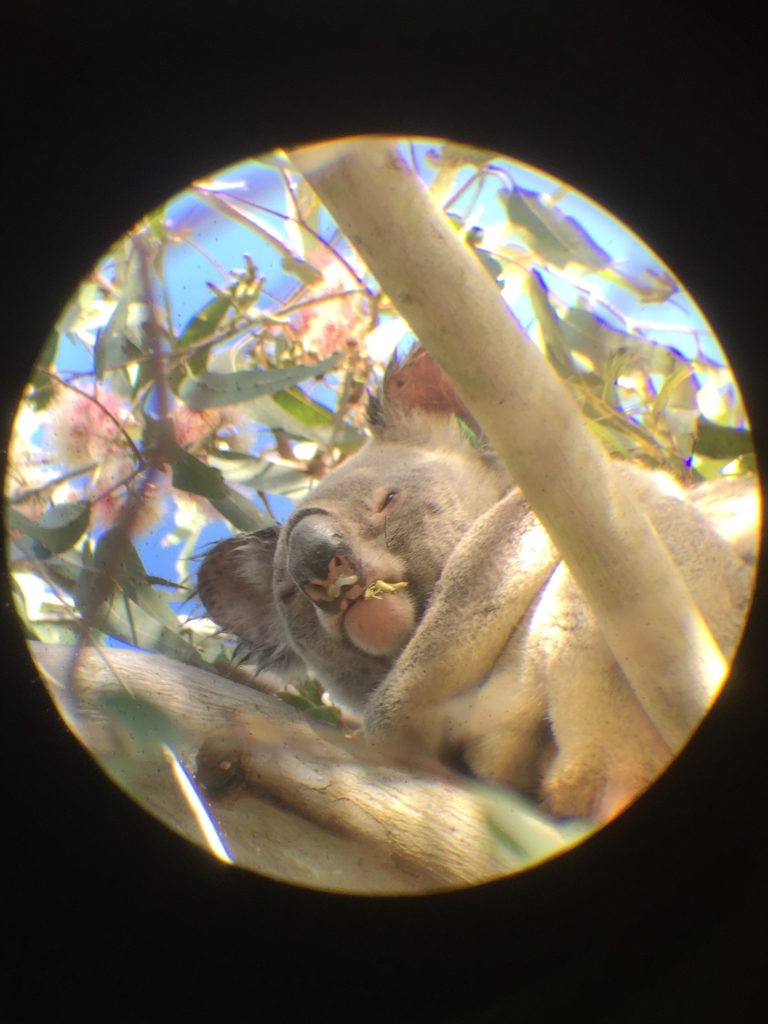
Sick koala “Branson” spotted with nasal discharge during tracking.
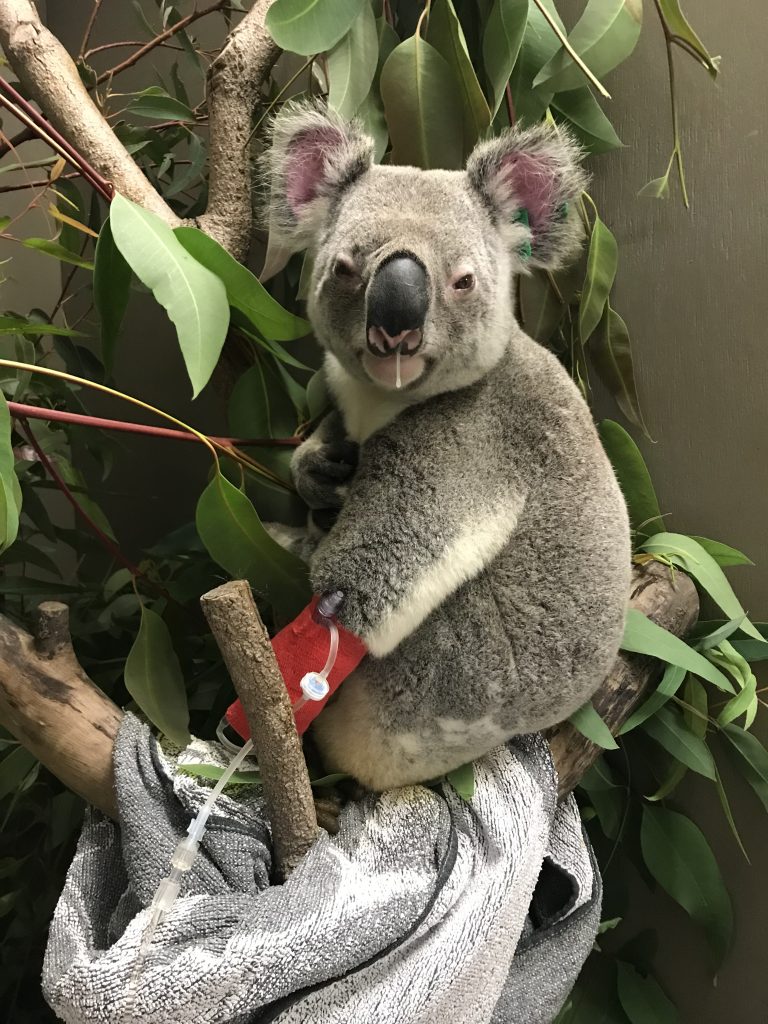
Koala “Branson” on IV fluids being treated for a life-threatening respiratory infection (Bordetella bronchiseptica and Chlamydia pneumoniae).
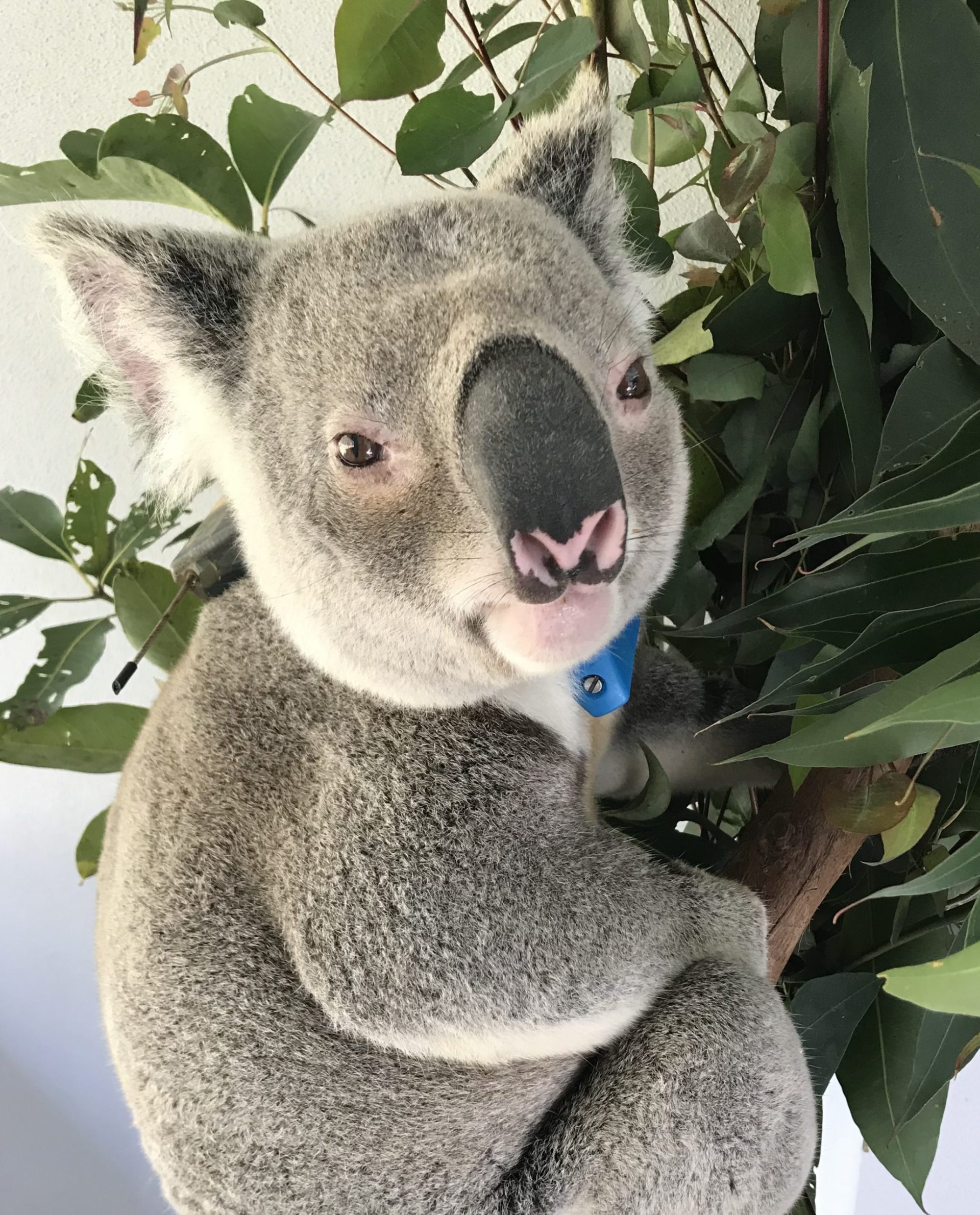
Koala “Branson” was treated successfully and eventually released.
Our Passionate Team
Our team is full of passionate people who care deeply about the koalas and their welfare. We are not simply conducting research; we are driven by a deep commitment to helping these animals survive in an increasingly hostile environment. Our monitoring work involves tagging koalas, a crucial tool that helps us track their movements, monitor their health, and keep them safe when the trees come down. The collars provide us near real-time GPS and activity data, allowing us to locate and treat sick or injured koalas. We regularly intervene when a koala faces danger—such as notifying landowners when a koala is in their yard with their dogs, getting the police to stop traffic so we can rescue a koala from the edge of a busy highway, or rescuing them from rail lines—however, we can’t be with them constantly, and they’re not always in a tree allowing a safe capture.

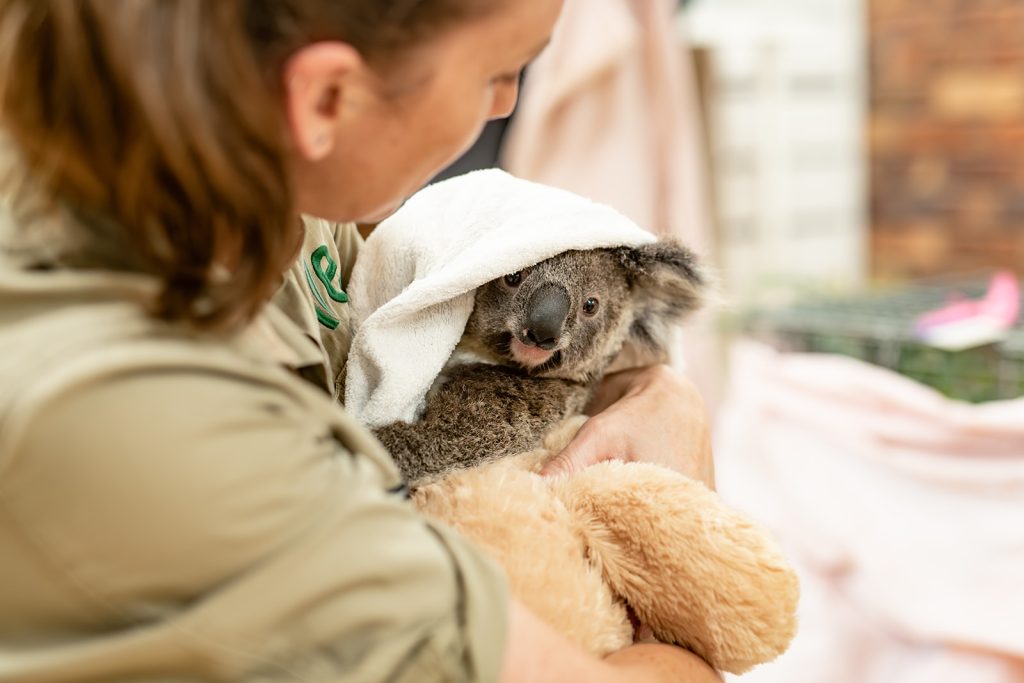
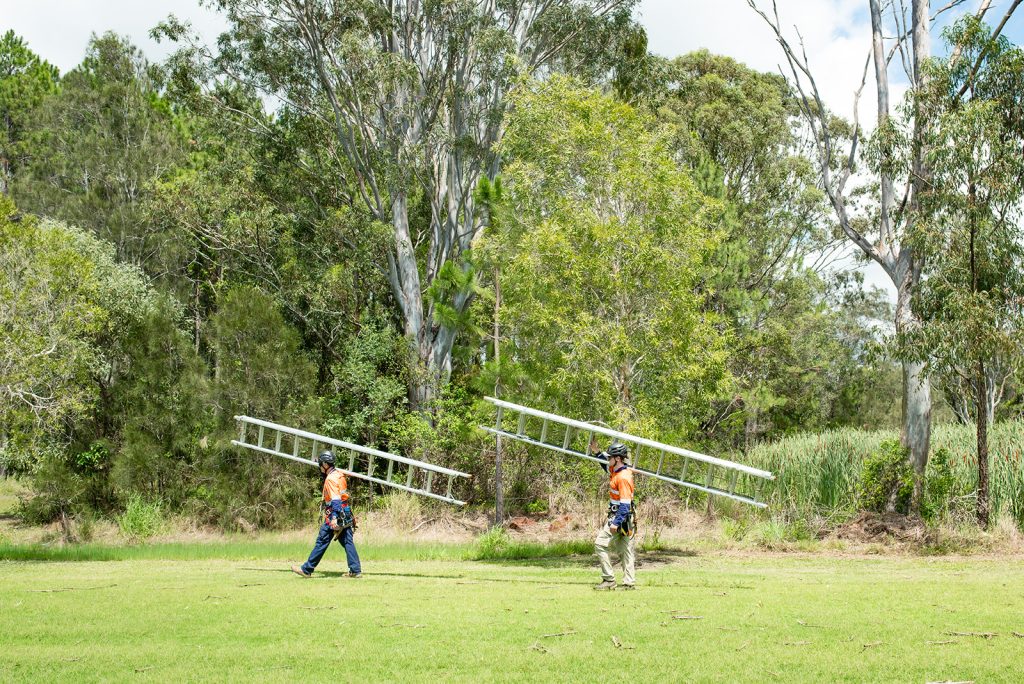
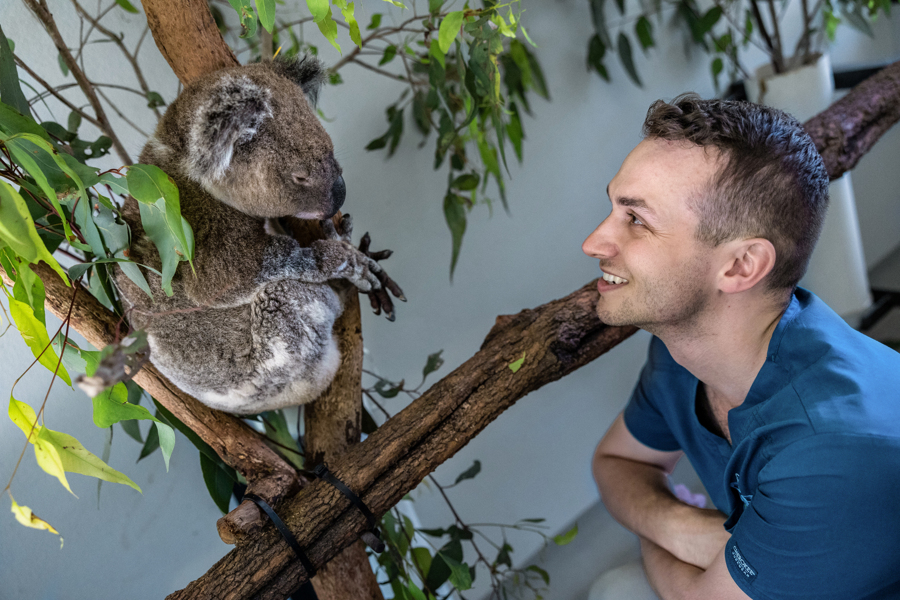
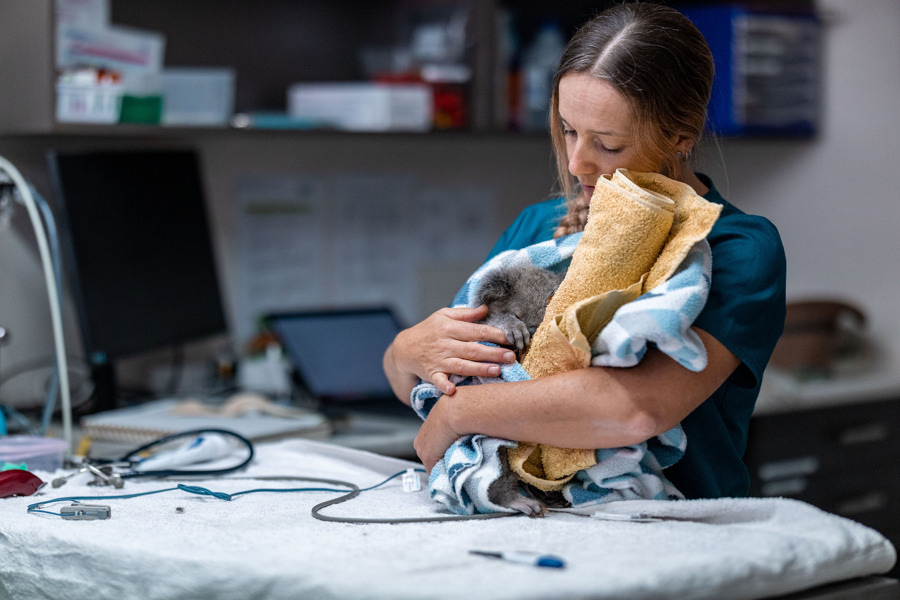
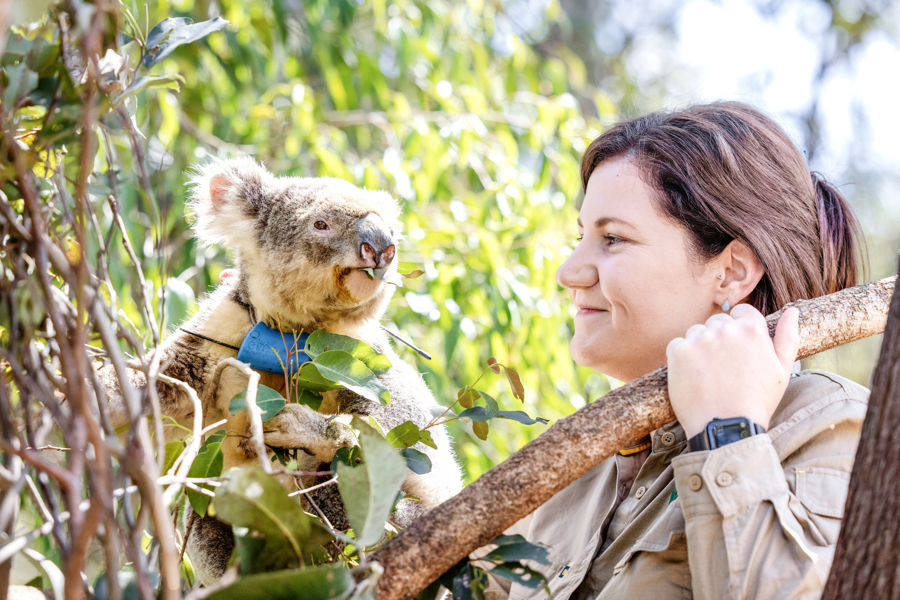
We Can’t Solve Every Problem
While collaring is an incredible tool, it’s not a cure-all—it can’t solve every problem, but it sure does help. Without the use of collars, detecting and managing koalas would be a much greater challenge. It’s also important to note that fauna spotter/catchers alone aren’t enough to ensure koala safety when the trees come down. EVE conducted a koala detection survey using four experienced fauna spotter/catchers along with tagged koalas. Despite the experience of the spotter/catchers, they were only able to detect 7 out of 30 koalas (23%). This statistic highlights how many koalas might be missed if we relied solely on fauna spotter/catchers to ensure their safety during habitat clearing. The use of tagged koalas and monitoring technology ensures that fewer koalas go unnoticed and unprotected.
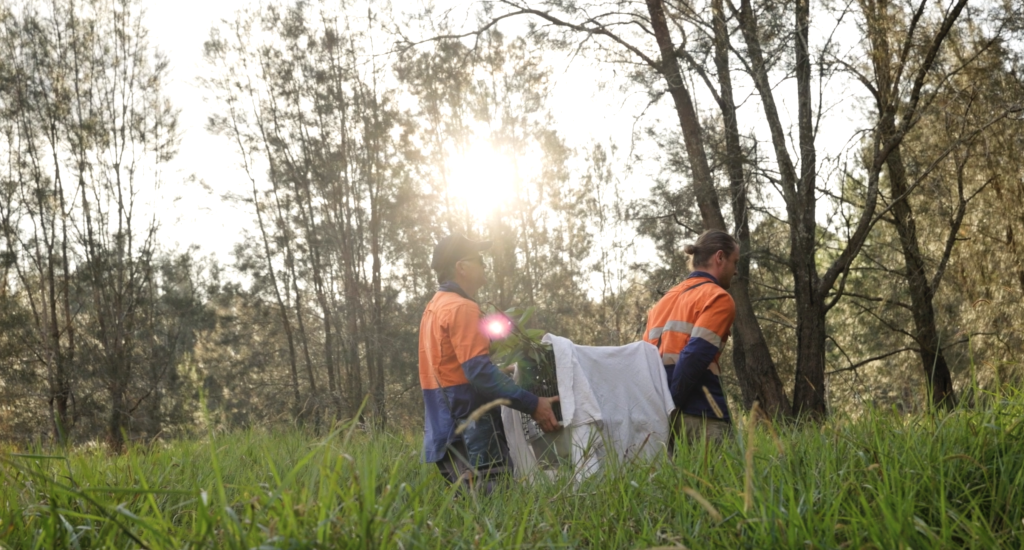
While our efforts are not a perfect science, they are the most effective method we have for managing koala populations in a rapidly changing environment. We cannot be with every koala at every moment, but our monitoring efforts allow us to often identify health issues early, provide treatment, and regularly intervene in critical situations. Stopping this work would be a significant setback for koala conservation. Koalas need more than just habitat protection—they need monitoring and intervention to address the challenges they face right now.
Preserving the Continuity of Life-Saving Koala Work
If our work is stopped, the koalas living in the path of habitat destruction will go unmonitored. Their chances of being harmed during clearing operations increase dramatically without the safety net of our monitoring efforts. Additionally, koalas that are suffering from diseases like Chlamydia may not be found in time to receive treatment, and their suffering will continue unchecked. Without our intervention, the problem becomes even worse.
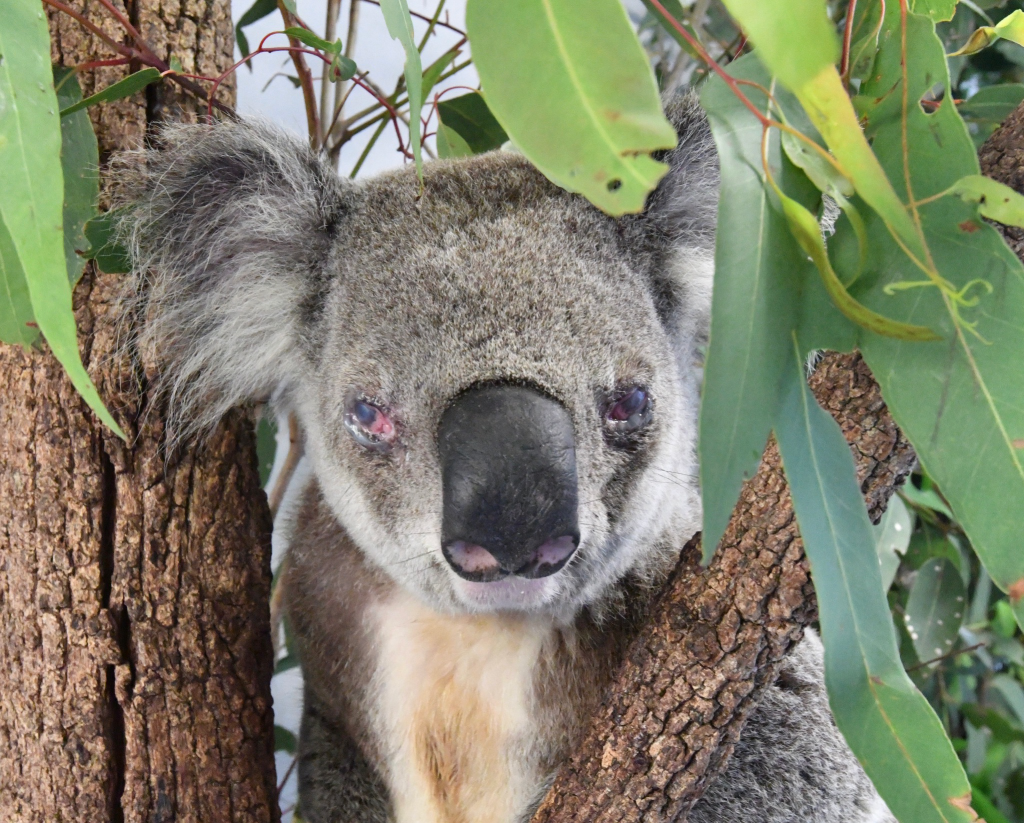
Chlamydial disease (conjunctivitis).

A wet and dirty bottom (cystitis).

Chlamydial disease (conjunctivitis).

